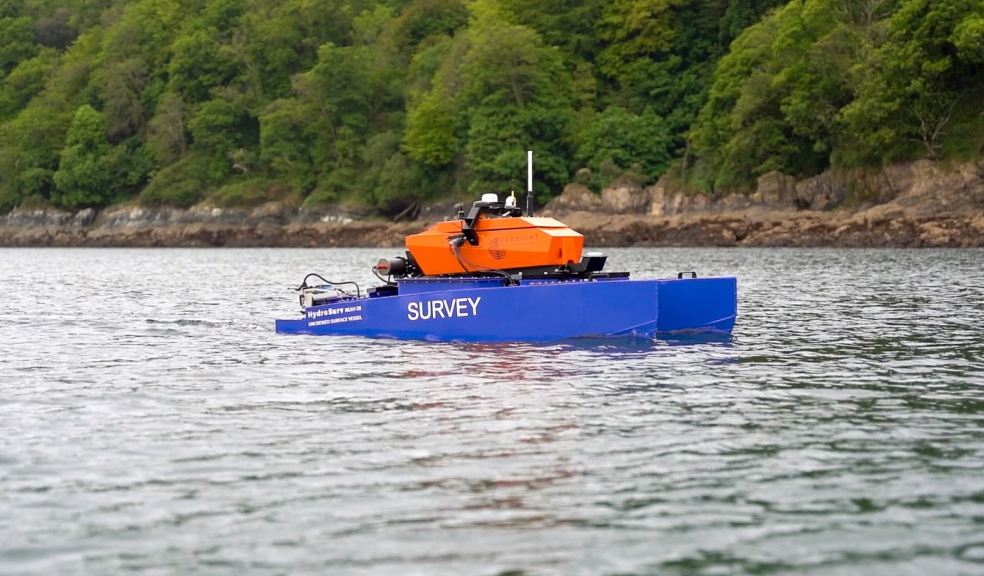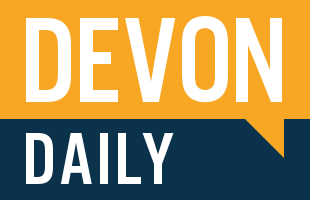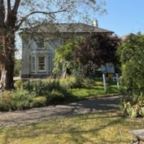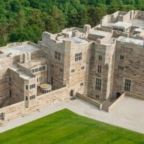
SW innovators collaborate to develop enhanced solutions for seagrass monitoring
A new, non-invasive method to measure and monitor seagrass biomass on the seabed around England’s South West coast is being developed as part of an ongoing, collaborative project.
The innovative new technique is currently being trialled by local companies HydroSurv in Exeter and Totnes based Valeport, working with the University of Plymouth and Natural England, and supported by a grant of more than £266,000 from Innovate UK’s Smart Grants programme.
It builds on the concept of the acoustic reflectivity of seagrass providing valuable information to characterise submerged aquatic vegetation. Valeport’s VA500 altimeter, a hydrographic instrument used for measuring underwater positioning, is installed onto a small Uncrewed Surface Vessel (USV), built by HydroSurv and with specific modifications for this project. Remotely controlled and with no people onboard, the USV provides a non-invasive and cost-effective platform for seagrass site survey.
A large, validated signal library and deep learning algorithm, developed by the University of Plymouth, deciphers the survey data collected by the USV to predict seagrass distribution. The data is visualised and interpreted within a cloud application created by HydroSurv.
Seagrass meadows are a crucial part of the marine ecosystem and are increasingly being recognised for their essential carbon capture abilities. As well as being as effective at storing carbon as woodland, seagrass also provides vital habitat for young fish, seahorses and jellyfish. It additionally cleans surrounding seawater and helps to stabilise the seabed, thereby reducing coastal erosion.
The USV platform facilitates accurate repeat surveys that can be compared to monitor temporal changes in seagrass coverage for the planning of protection and regeneration projects at biodiversity-rich worksites. The full solution, which was demonstrated successfully to project stakeholders in Cawsand Bay, Looe and on the River Yealm for the first time in May this year, is set to change the way seagrass meadows are monitored in the future, complementing traditional diver surveys to cover much larger areas and enable rapid re-survey work as required.
Fiona Crouch, Natural England ReMEDIES Project Manager said: “To effectively conserve and restore seagrass meadows we need innovative solutions to enable cost effective, repeatable surveys of established meadows, plus areas being restored through projects such as ReMEDIES, to monitor change. I’m really excited to see where this new technology will take us in supporting our seagrass conservation efforts.”
HydroSurv, Valeport and the University of Plymouth form part of a fast-emerging South West England maritime innovation cluster. The project partners are engaging with the Environment Agency and Natural England to develop the solution further, with a second phase of demonstrations planned for September.
David Hull, Founder and CEO of HydroSurv said: “Staying true to our values of ocean and environmental stewardship, the work being carried out within this collaborative project will directly translate into impact addressing UN Sustainable Development Goal 14, ‘Life below water’. The ability to provide blended, non-invasive solutions that rapidly acquire, process and visualise the coverage and density of seagrass meadows is central to improving our understanding of these vital ecosystems and delivering regular and repeatable resurveys in-stride with the needs of coastal practitioners.”
Valeport, which has created precision underwater measuring equipment in Devon for a worldwide customer base for over 50 years, customised the VA500 altimeter, which uses state of the art signal processing, for this seagrass project.
Jim Gardiner, Research Scientist at Valeport said: “The VA500 altimeter was developed to deliver reliable underwater range measurements in a compact, robust package. Working with University of Plymouth and HydroSurv, custom firmware was developed to deliver low noise, high quality, correlated acoustic profiles to enable deeper analysis, exploration, mapping and classification of the acoustic information gathered by the VA500.”
Dr Tim Scott, Associate Professor of Ocean Exploration at the University of Plymouth, said: “As part of the project, the application of deep learning algorithms for the acoustic detection and characterisation of seagrass beds has introduced improved accuracy and efficiency over more traditional techniques. When combined with the advantages of lightweight autonomous survey platforms, this new combined survey solution introduces a step-change in accurate and repeatable seagrass mapping.”
The UK has lost around half of its seagrass since the mid-1930s due to factors ranging from seagrass wasting disease (SWD) and pollution to physical disturbance from the anchoring, launching and mooring of leisure boats. The £2.5 million LIFE Recreation ReMEDIES partnership ‘Save Our Seabed’, led by Natural England and funded by the EU LIFE Programme, was launched in July 2019 to protect and restore these sensitive habitats.











